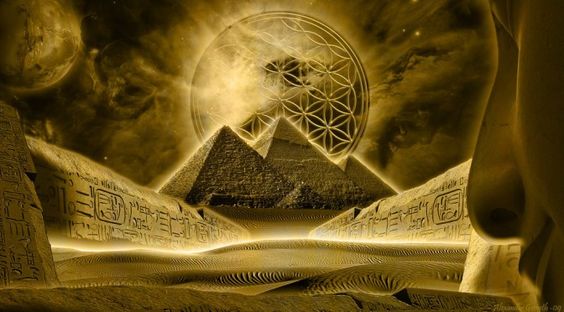Egyptomania is a word that everyone has heard at some point in their life, but it is much more than just filling our homes with Tutankhamun figurines. The very history of its origin and development over time is fascinating.
Origins of Egyptomania: Greece and Rome
The passion for everything related to ancient Egypt predates the science that studies this civilization. In other words, Egyptomania was born before Egyptology.
The Greeks were the first to feel fascinated by the culture that emerged on the banks of the Nile, although they would not consider themselves Egyptomaniacs as such. Egypt came into contact (mainly commercial) with Minoan and Mycenaean Greece during the Middle and New Egyptian Kingdoms. Homer in the Iliad and the Odyssey conveys a vision of ancient Egypt as a land of infinite wealth and wise men.
Between the 6th and 5th centuries BC, several travelers and Greek sages came to Egypt to learn from the Egyptian priests in the so-called Houses of Life, where astronomy, medicine, mathematics, and philology were taught.
For example, Pythagoras studied astronomy and geometry in one of these schools, which were attached to the great temples. But it was the visit made by the historian Herodotus in the 5th century BC to ancient Egypt which unleashed what we could call the first Egyptomania among the Greeks.
The “Father of History” tells us what the Egypt he observed was like when it was still a living civilization in books II and part of III of his History. Before his eyes appeared a deeply religious Egypt, whose wise priests and scribes were guardians of a history and wisdom so ancient that, in his opinion, Greek culture itself must be derived from Egyptian in many respects.
After the Roman conquest of Egypt, Egyptomania also began among the Romans, who viewed the most famous queen of Egypt, Cleopatra, with both horror and fascination. For them, this woman represented all the mysteries and riches of the East (ignoring the fact that the queen was actually of Greek origin).
Within this Roman Egyptomania, the success of the cult of one of the most important Egyptian goddesses, Isis, stands out. So much so that we find temples dedicated to this divinity spread throughout the Roman Empire.
The Roman emperors restored several Egyptian monuments, especially temples, finished others from the Ptolemaic period, or ordered the construction of new buildings where they were represented in the Egyptian style, inscribing their names with hieroglyphics like the ancient pharaohs.
Egyptomania in the Renaissance
After the last inscription in hieroglyphic writing, dated to the 4th century AD, the ability to read hieroglyphics was lost for centuries.
During the Middle Ages, ancient Egypt was only known from what was told in the Bible. In the Renaissance, intellectuals of the time tried to unravel this mystery, starting with the Hieroglyphica by Horapollo (2nd-4th century AD), a completely fanciful work.
Ancient Egypt began to be seen not only as the setting for some passages in the Bible but also as a mystical and magical land, the guardian of esoteric knowledge reserved for a few and transmitted through its mysterious symbols.
Egyptomania in the 18th and 19th Centuries
During this period, two significant events occurred, both contributing to the creation of the new Egyptological science and the spread of Egyptomania among European society. The first event was Napoleon’s expedition to Egypt (accompanied by several scientists), which resulted in the publication of “Description de l’Égypte”. The second event was the decipherment of Egyptian hieroglyphics, thanks to Champollion, using the Rosetta stone, found during the aforementioned expedition.
Egyptology emerged in France from this moment. As a reflection of this growing Egyptomania, Verdi’s opera “Aida,” inspired by ancient Egypt, premiered in 1871. His famous “triumphal march” is considered by some to be a veritable hymn of Egyptomania.
“I See Wonderful Things”
The real Egyptomaniac boom began in 1922 when Howard Carter discovered the treasures of Tutankhamun, launching his famous phrase. Since then, we have enjoyed movies set in ancient Egypt, historical novels about the pharaohs, comics, art of all kinds, and more, related to the land of pyramids.
Thanks to new technologies, we have easy access to all kinds of materials that bring us closer to ancient Egyptian culture, such as this website. Egyptomania is more alive than ever.
Source: María Isabel Cubas Contreras, historiaeweb






